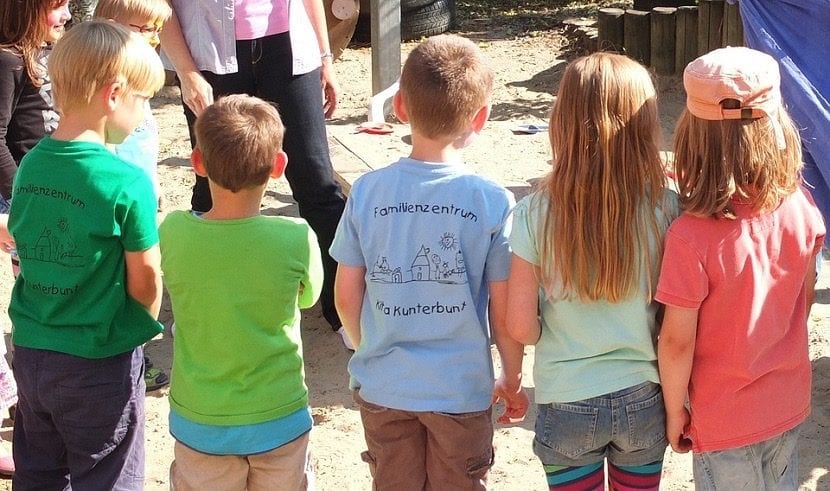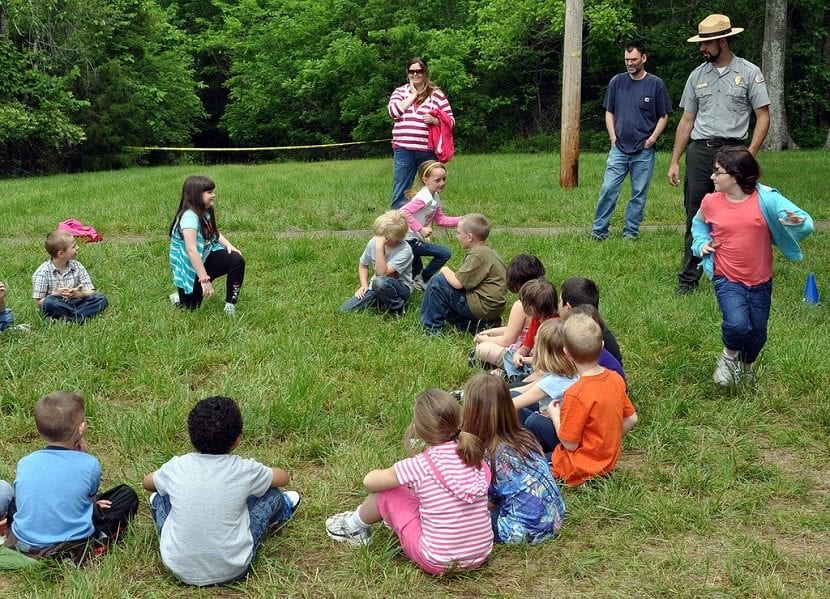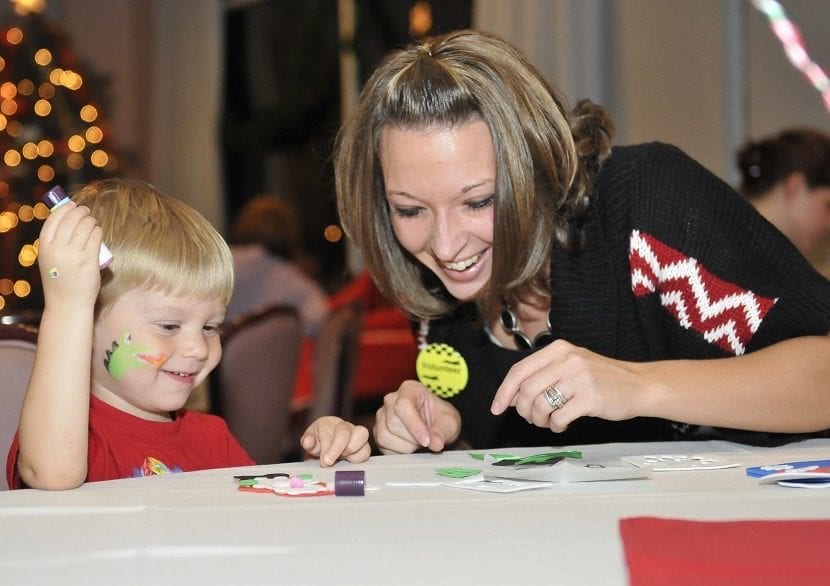
“Integration dynamics” are considered to be methods used in groups to achieve a specific goal and enjoy the benefits of these dynamics. These can be used for children, teenagers or university students and adults in workshops, companies, among others.
The purpose of each dynamic will depend on what the employer is looking for, that is, depending on the results to be obtained, you can choose between one of the dynamics or integration techniques that we will explain throughout the article.
What are integration dynamics for?

As we mentioned, the dynamics have specific objectives, so depending on various aspects, you can choose the one that provides the results you are waiting for. Among these factors should be considered the size of the group, the place or context where the dynamics will take place, the characteristics of the members and the coordinator of the activity.
However, its main function is to create an environment in which members of the dynamic can feel comfortable and understand the importance of companionship, which is great for groups of people who don't have a lot of trust in each other. In addition, they also allow individuals to leave ego and competition behind, to focus on teamwork.
Dynamics or methods of integration for children and adolescents
If you are a teacher or work with children in an area, you will love these methods, since we have chosen the most fun and suitable for them; In order to provide you with effective alternatives in an organized way.
"My name is and my tastes are"
This integration technique it is ideal for the first day in which the group is located, since it allows to know the names and tastes of the boys or girls. The name is necessary so that they know each other and the tastes will allow them to achieve things in common between them.
- The dynamic would start with the coordinator saying, for example, "My name is José and I like to play with my dog."
- Next and in an organized way, each child should say their name and any taste or likes they have.
- At the end, the coordinator can ask the children if they remember the names of the others, as well as allow those who have common tastes to talk.
Hot potato
Or also "the hot ball", it is one of the most popular and oldest games, which can be used in the integration dynamics effectively, just by modifying one aspect of the game that you will see below.
- An object will be chosen to represent the "hot potato", it can be a ball, for example.
- The children should sit in a circle.
- Because the "potato" is hot, they should quickly pass it to the partner on the left, while saying their name.
- The coordinator, with the help of a stopwatch (the time will depend on the number of children), must repeat the phrase "the hot potato", which he will say more quickly as time runs out.
- With 10-15 seconds left, the phrase would change to “burned” and at the end “burned”.
- The last child to have the item will be the one to lose.
It is recommended that the groups are not larger than 15 children and that the time of each game is enough for the whole group to be able to say their name, but remembering that there will be children waiting as they leave the game.
The pet
One of our favorite methods, as it allows child group collaboration and participations from the beginning of the activity and opens the possibility of carrying out others. This consists of the following:
- Choose a stuffed animal or similar that will be the group's mascot (it can be chosen by the children or by the coordinator).
- The group should give it a name that the majority agree with.
- From there, the possibilities are endless, since you can do a lot of activities using it.
- For example, you can play to make up a story where the pet is involved; but that we will explain in the following dynamic.

Shared tale
Children love stories and stories, so inventing one among all of them is a super entertaining activity that will favor both the integration of the group, as well as the creativity and imagination.
- The coordinator will begin to tell the story or story, which will include him, the pet (if they followed the previous dynamic) and a child to be pointed out.
- This will have to say his or her name and continue the story, where another boy or girl must appear who will have to point out and so on.
Who is missing?
For this activity it is recommended that another of the integration dynamics has already been used, since it is necessary that children or adolescents have at least an idea of what their other classmates are called; what will allow to reinforce the knowledge and to work the memory.
- The group will be organized in different rows (standing or sitting).
- Then everyone will be asked to close their eyes.
- One member of the group should leave without making noise (it is also possible to cover it).
- The coordinator should ask "who is missing?"
- When they get it right, the child will be integrated again and everyone will have to change their position (preferably if they do it with their eyes closed) to make the activity more difficult.
Mirror
An ideal technique for build confidence in children and make them reflect on the emotions and attitudes of each one of them. The steps to follow for this integration dynamic are:
- The person in charge of the activity must form random pairs.
- The two children should face each other.
- First, a child will try to copy the physical movements of the other simultaneously, regardless of the part of the body that he uses (he can imitate expressions, movements of the limbs, among others).
- Then it will be the other child's turn to imitate his partner.
Dynamics for the integration of youth and adults
Although the above dynamics can work for any group regardless of age, they are a little more childish and easier to fulfill; so we have preferred to classify these others integration techniques for adults and youth.
The trust
This method is quite useful to strengthen trust between the members by making them find the people with whom they are best suited. It takes some time for this technique, although it depends on how many individuals you are.
- The coordinator will ask the members to choose a partner to work as a team.
- They should be placed one in front of the other with their feet together, holding hands and leaning back trying to keep their balance.
- Ideally, everyone should do the exercise with the other participants, that is, each one tries each other.
When doing the activity, the participants will notice that with some people it was much easier to do than with others, since sometimes we become more comfortable with some people. So it can be concluded by reflecting on trust and its importance, as well as teamwork.

Putting together the word
This activity allows members to meet and interact, although it is possible to modify it to expand the benefits of its use. To do it, just follow the following steps:
- The organizer will give a specific letter to each person without the others knowing which ones each one has. You can also give a paper with the letter or that the members choose (they would be inside a jar, folded). These letters must form a word, such as “trust”.
- The members must look for the other people to acquire the letter they have, although they must introduce themselves first, interact or whatever rule the coordinator prefers.
- The first person to complete the word "trust" is the winner.
Order in the ...
The name is incomplete because it can be changed according to the coordinator's taste and the possibilities of the place where the activity will take place. However, this is one of those that allow you to meet, interact, teamwork and get organized.
- The person in charge should ask the participants to stand on a bench, a line, a tube or whatever, but to keep their balance in that place.
- Then they should be asked to order them according to what the coordinator considers appropriate and they are prohibited from communicating orally. It can be according to age, height, initial of the name, among others.
- The members must organize themselves without moving from the bench, tube or line, which will make them work as a team to avoid falling.
- Finally, the coordinator must check that the order was carried out correctly, asking each of them their height, age or what was chosen.
Solve the crossword
This technique is very effective in reinforcing teamwork, stimulating the participation of all participants, and other benefits. It is quite simple to do:
- The whole group is organized into several subgroups according to the number of people.
- Then the same crossword is given to everyone (you can download it online or do it yourself).
- The group that solves it first will be the winner.
The wrong message
This is one of the fun dynamics, it allows us to reflect on the transmission of information from one person to another, since the message begins being one way and ends up becoming something different.
- The coordinator should order the participants in a row or circle.
- A message should then be conveyed to the first in line or the participant chosen by the circle organizer without the others listening.
- The person must pass the message to the next (also without anyone listening) and so on until the end.
- The last member must say the message and the comparison with the original will be made.
We hope that integration dinamics They are useful to bring you closer to the people of a certain group and the proposed objectives. If you have any questions or want to collaborate with other techniques, remember that you can use the comment box below.
Fun integration dynamics

The most inquisitive ball
Perfect for working with small groups. A way to get to know their members, breaking the ice by way of presentation and with very original questions.
- We are going to need a ball as well as a music player.
- The members are placed in a circle and when the music begins, the ball will pass from one to the other.
- The person who has the ball in his hands, when the music stops, she is in charge of saying her name and asking the others a short question.
- The other classmates will have to answer before the music starts. Because once it happens, the ball has to keep moving.
This game will last until everyone has come forward or intervened. Since as we have mentioned, it will be a small group. If there are many people, they can be divided into several, but they will not alter the rules of the game.
The spiderweb
Its name already indicates that it can be a bit confusing, but the truth is that it is a very fun game. Perfect to get to know each other a little more and have a good laugh.
- Participants will stand in a circle.
- They will be given a ball of wool or string, a ribbon will also work. The person who starts will have to say their name and some confessable secret about himself. So, he will keep the end of the ribbon or string and pass the ball to another of his teammates.
- This second partner will have to do the same as the first and so on until the whole group is twisted into a kind of spider web. In order to undo it, the last person who had the ball or ribbon in his hand must give it to whoever sent it. That is, to do the opposite way.
- The ball will have to go back to whoever started the game and repeating the data that their teammates gave, so here attention plays a leading part. Do you remember all the secrets of your colleagues?
Boom!
Perfect for cheering on group members, while concentration also plays a very important trick.
- They will all sit in a circle.
- It will be numbered out loud. That is, each participant will say a number. Whoever gets the 3, those ending in 3 or multiples of this number such as 6,9,12 etc, will have to say the magic word Boom! Instead of the corresponding number.
- Let's see how many fail! Because if they don't get it right, they will have to leave the group. When one leaves, the count starts over with number one.
- If someone takes a long time to answer, because he is thinking if the number he touches ends in 3 or is a multiple of 3, then he will also lose and leave the circle. The last two players remaining will win.
Joining sayings
Besides being perfect as a presentation, it is a very lively game. Without a doubt, shyness will be parked so that everyone is carried away by the sayings.
- Participants will be given two blank cards. In one they will write the first part of a saying and in the other, the second. For example: 'Barking dog, little biter'. It's one of the mythical sayings. Well, the first part that would go on a card would be: 'Barking dog', while 'little biter' would be written on the second card.
- Once all the cards are written, each participant will keep one and the other, they will mix. So each one will have to find the other part of his saying among the players. A simple and very educational game!
Dynamics of labor integration

the dynamics of labor integration will improve the work environment. They will make the employees know a little more and that both the organization and the productivity of the company are rewarded.
Room scape
- You will need a room. In it you will have to place all kinds of clues so that the group of employees can get out of there. It may be some riddle.
- To do this, you will use newspapers or magazines in which you will underline key phrases. Closed boxes containing secrets, etc.
- All content will have to do with the company itself or with the type of job performed by the group that is playing.
- Here the teamwork is very important, so it is always an elaborate game, but one that has great benefits for employees.
The drawer
- Each of the members will be given a few hours. Whoever starts will have to draw a picture on them.
- Without showing the result of said drawing, you will have to do gestures and grimaces to their companions for them to reproduce the same drawing.
- At the end it will be checked whether, thanks to the gestures, the group has understood what their partner had drawn.
The distorted message
A game like this is perfect for testing the concentration and memory of each individual.
- One of the participants will say a message to the person on their right.
- The message will be passed one by one, always in a low voice so that the rest do not find out. In addition, it can only be repeated once.
- When reaching the last person, they have to play the message out loud. Will he be able to get it right or will the message have been somewhat distorted?
The dance
A way to meet colleagues, thanks to discovering their ideas and what they think about their work to be done every day.
- Each participant is given a card, which will be pasted on the chest or back. In it they will answer a question, in a short way, which may be: What do you like the most about your job?
- The music will begin and they will be formed dance couples that coincide in very similar answers.
- Every time the music stops, there will be a change of partner. If we see that there are not many coincidences in the answers and there are few pairs formed, the question can be changed.
Dynamics of family integration

Because not only games are relegated to children, but as we see, all areas are conducive to entertainment. In this case, we are left with the family unit. Because a family day can be more fun than we think. A way to carry out activities together and for all ages.
The coin game
- First, we blindfold one of the participants and put him in the center.
- The others will sit around him, forming a circle.
- They will begin to sing a song while passing a coin.
- At the end of the song, a person has the coin that he will hide in his closed hands.
- Whoever had the blindfold can remove it to guess who has the coin.
- If it is correct, the position will be changed with the person who had the coin, otherwise, it will have to pass a test.
An original story
- We need a sheet of paper and a pen.
- One person will write a sentence on one line. Below it, write a word.
- Now you need to fold the page so that only the word is visible and not the phrase.
- The next one must make another phrase that begins with the indicated word and leave a single word on the next line.
- When everyone has written, you can read the full story, sure, it will be the most fun and original.
An invented dialogue
With such a game of integration dynamics like this, you will lose your shyness, at the same time enhances creativity and improvisation.
- In this case we will need television, although in another way. We will put an image of two people who are speaking.
- To do this, we need the volume to be very low or to be a sequence of a series that you can pause. At that time, two participants will invent a dialogue.
- It may cost a bit, but then your imagination will make crazy conversations take center stage.
What a good information, it helped me a lot, thank you ...
Very good article, the dynamics described are good and they are easy to use in each area.